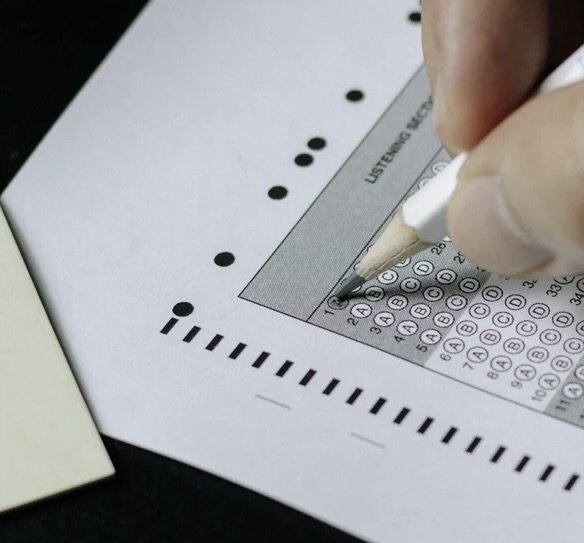FIREFLY COMMENTARY
The number of incoming students at the University of California requiring remedial math increased thirtyfold over just a five-year period, with nearly one in five students failing to meet standards for 8th-grade-level math upon admission in 2025.
As a senior at Memphis Rise Academy who wants to become a pediatric registered nurse, I have learned that success after high school is about having the right support and opportunities when you need them – from family, counselors, and teachers.
As Tennessee leads the nation in a “nuclear renaissance”, graduating students will be presented with new opportunities to enter high-skill, high-demand careers such as Nuclear Technician, Nuclear Power Reactor Operator, and Nuclear Engineer.
My journey toward becoming a NICU (Neonatal Intensive Care Unit) nurse illustrates both the opportunities available to students and the guidance needed to help us navigate critical life decisions.
Tennessee lawmakers can go back to the education standards that routinely placed our state at the bottom or they can aspire to something better by building upon the successful policies that kick-started our state’s gains.
Buried deep in the bill, this provision will expand Pell Grant eligibility to students pursuing nondegree credentials.
SCORE President & CEO David Mansouri unpacks five key data insights from the 2025 TCAP results, offering a look at the wins and persistent gaps while charting the course for our work ahead.
Lawmakers achieved transformational victories that will truly improve the success of Tennessee children during the 2025 legislative session. You just have to know where to look for the sunshine.
Across Nashville, families are waking up to a painful truth: The public education system that’s supposed to serve all children is too often more invested in maintaining power than producing outcomes.
When we talk about the state of education in Tennessee, we often hear of staffing shortages and issues caused by teacher retention. Last fall, more than 800 classes in Middle Tennessee alone did not have a full-time educator.
Walking into my first classroom in Taiwan was like stepping into another world of education. The desks were arranged with precision, the students were armed with textbooks and an air of focus, and the expectations were clear: excellence was not optional, it was the norm.
As Tennessee looks to the future, the connection between innovative education pathways and economic independence is undeniable. By reimagining how students are prepared for the workforce, we can equip the next generation with the tools they need to thrive in a fast-changing economy.
With the election season finally behind us, I find myself returning to two key themes after some reflection. First, the national electorate, and its preferences, has fundamentally realigned over the last decade. Our country and our state spoke decisively last Tuesday, and we must listen.
Second, as I reflect on the tremendous progress our state has made in public education over the last twenty years, I look to the future. As Tennesseans, we will all play a part in writing this future, and we will need to make choices.
Between 2007 and 2011, reforms to better align Tennessee with national assessments substantially narrowed the “honesty gap” that occurs when students score higher on less demanding state assessments than they do on national assessments. These reforms helped Tennessee dramatically improve its ranking on national assessments and efforts to undermine them are misguided.
As a parent, we spend our days constantly evaluating decisions that will shape our children into capable adults and preparing them for the journey ahead. Perhaps one of the most important of those decisions is determining what pathway we select for our child’s education. As a parent of two, I have learned that the answer to that question is not stagnant and can change alongside the needs of the child.
In 2007 — the year I retired as Senate majority leader — Tennessee got a wakeup call when a U.S. Chamber of Commerce report awarded our state an “F” for low academic performance. After conversations with stakeholders statewide to develop a shared vision for improving student outcomes, one thing became clear: Tennessee had to begin making significant changes in education.
It makes intuitive sense: Smaller districts with fewer kids need fewer schools. A district with 40,000 students operates many more school buildings than a district with 20,000, which in turn runs more than a district with 10,000. With widespread enrollment declines (for example, California’s school-age population is forecast to drop by 15% over the next decade), many districts are now grappling with whether to close one or more schools.
It’s a classic American story: Someone moves to the big city with nothing to their name but a dream. Maybe, with good timing and some luck, they can turn that dream into something tangible. Social media appears to have made finding stardom and success in the music business as easy as posting some TikTok videos. The reality, though, is that it’s difficult to go viral online, and it’s even harder to leverage a few million views on a catchy song into a lasting career.Navigating the music business can be challenging. A recording industry degree can make it easier to build a sustainable career by providing connections, skills and credibility. The same is true for any competitive industry.
Tennessee lawmakers face a choice: embrace innovation in public education by supporting charter schools or continue resisting change. Public charter schools present an opportunity, not a threat, to Tennessee’s education system.
A few months ago, I was in Harrisburg, Pennsylvania attending a wedding. Whenever I find myself in a capital city, I always make a point to visit the capitol building. After a brief tour, I walked around the city and wandered into a small indoor mall a few blocks away.The building had clearly seen better days. Most of the commercial spaces were vacant, and the walls displayed hallmarks of vandalism that the city had attempted to paint over. Fake plants coated with a thick layer of dust dotted the interior, and a few presumably unhoused persons were sleeping in an area that was once a food court.
As the Memphis community embraces change with open arms, we stand on the threshold of a new era, welcoming Memphis-Shelby County Schools (MSCS) newly appointed superintendent Dr. Marie Feagins with enthusiasm and hope.Dr. Feagins takes over the mantle of leadership for a school district that needs innovation, collaboration, and a steadfast commitment to excellence. The families she will soon serve are entrusting their children’s future in her hands.We offered three of those mothers an opportunity to express what they’re expecting and where they hope Dr. Feagins leads the school district in the coming years.
Every March, my North Star Academy Lincoln Park High School students anxiously await financial aid offers from colleges and universities. But this year, they may not know how much financial assistance they will receive until May or June. That’s a devastating timeline for students from the low-income communities my school serves — they’ll have less than a month to figure out the next four years as they get ready to make the biggest decision of their young lives.
Public charter schools across the state are facing a facilities funding crisis that will continue to compound in the coming years. Just half of public charter schools’ facility needs are currently met by state and local funding. The remaining facility expenditures must be covered out-of-pocket by the public charter school, which means fewer teachers, fewer classroom materials, and substandard facilities.By 2028, this funding gap is projected to increase to the point that just 42 percent of charter facility needs are covered by traditional revenue sources.
When K-12 schools closed their doors for in-person instruction in spring 2020, it had a variety of negative effects on students and teachers. It also shut off the training opportunities for future educators.In response, states instituted a variety of short-term waivers allowing candidates to teach without fulfilling their normal requirements. Those policies helped candidates who would have otherwise been prevented from teaching, while aiding school leaders in filling open positions.
Recent conversation around school performance in Tennessee has been dominated by student growth and achievement measures. This is understandable, as both provide valuable insight for school accountability tools and have a strong correlation with student outcomes.Yet an often-overlooked factor in the formula for student success is college and career readiness. After all, classroom work means little if it is not aligned with postsecondary or workforce expectations.Aligning K-12 education with workforce needs requires a culture of communication, collaboration, and innovation between public schools and industry leaders. In Tennessee, some communities have taken the lead on this initiative, and we believe they deserve recognition.
Activism has been part of Safiyah Suara’s young life since her politician mother hauled her along to demonstrations in a baby carrier. That’s why she’ll be spending this week protesting guns and the expulsion from the Tennessee House of two Democratic lawmakers by their Republican colleagues.
My life as a teacher is dramatically different now than it was five years ago. In my current Memphis high school biology classroom, students are caught in a whirlwind of activity, exchanging ideas and vigorously documenting observations. They’re immersed in an experiment analyzing pollution in local soil and its correlation to cancer rates, an all-too-real issue in our community. These are the moments that affirm my decision to become a teacher. They are also the moments that make me grateful to still be in the profession and grateful for the path that brought me here.
As instructional leaders in our district, we are fortunate to spend lots of time in classrooms. Cathy loves to share the story of popping in on one fourth-grade lesson to observe student writing. The room was cool, dim and quiet; the only sound was the scratch of pencils on paper as students brainstormed ideas for the poems they were going to write, a culminating task to wrap up an EL Education module on poetry. The teacher circulated as students pondered topics that were especially important to them — topics that were worthy of an entire poem.One word at the center of a student’s brainstorm was particularly striking: “education.”
The state of education is dire, and parents are seeking options. The achievement gap across the state in every subject, with a 23% spread between black and white students and a 19% gap between Hispanic and white students, is widening.In Knox County, just 10% of black students and 16% of Hispanic students are proficient in 7th grade math. Only 23% of black students and 27% of Hispanic students are proficient in ELA in 4th grade in Knox County. The alarms should sound off at the need for better education options for minority students.
This year’s Tennessee Comprehensive Assessment Program (TCAP) results were rightfully cheered for the gains Tennessee students made, but it’s important to keep in mind achievement gaps still persist.This is especially true for students who are English Language Learners (ELL). These students scored 15 points lower than the state average in English Language Arts and 10 points lower in Math.As our state looks for solutions to the inequities that create these achievement gaps, we can learn much from the model that’s currently serving Memphis students at Compass Community Schools.































